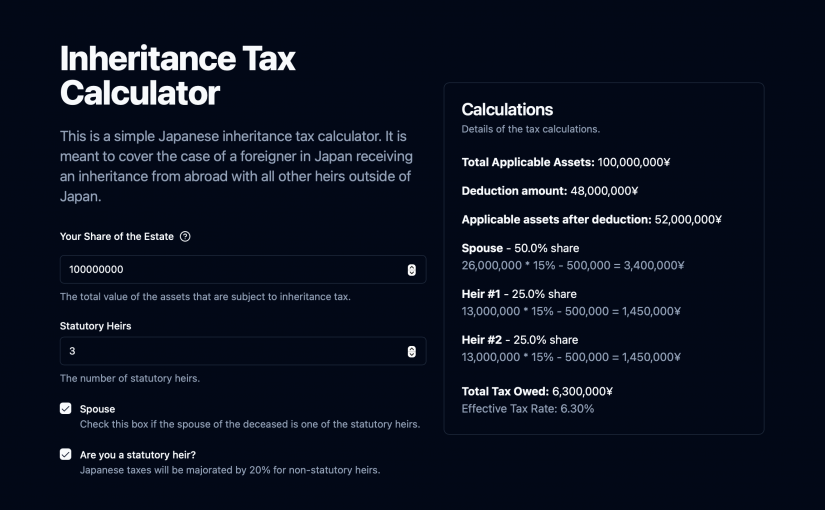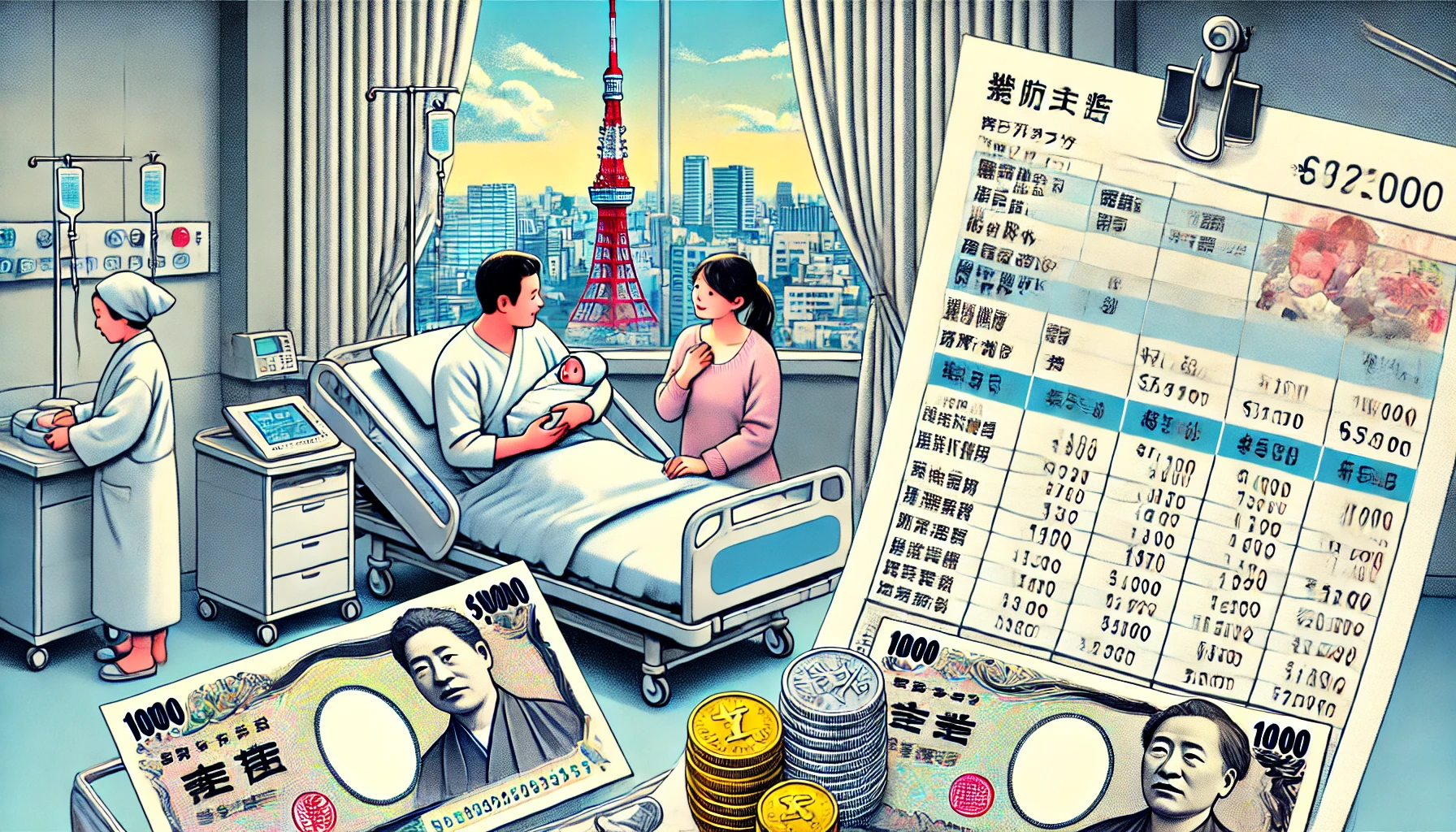Tag: japan
-

Simple Japanese Inheritance Calculator
I made a thing again! If you’re like me, a foreigner in your 40s living in Japan, the thought of dealing with inheritance taxes for your parents back home can be daunting. Understanding how these taxes might be applied is essential. To help with this, I created an app: Japanese Inheritance Tax Calculator. Here are…
-

Cost Breakdown of a Birth in Tokyo
In June 2021, my wife and I were extremely happy to welcome our first son into the world. I know many people express curiousness towards the costs involved with delivery in Japan as the system of it not being covered by health insurance but also somewhat covered by various subventions from the national and local…
-
REAL TALK 🇯🇵
I appreciate the transparency effort of giving average monthly overtime at your company in a Job Description for recruitment. But how can you write down “40 to 70 hours” and not think “we have a problem” ?
-
Cat Street matsuri
Taken with my iPhone on Cat Street, the street that connects Shibuya to Omotesando. I’m pretty impressed by the picture quality of my iPhone, I should take more photos with it…
-
VIE for Valeo in Kohnan / Kumagaya
I get a lot of Google traffic from French people whenever a job posting comes up for a VIE contract (special government high-profile trainee contract for European citizens in French companies abroad) at the place I work. All this traffic goes to a much outdated post I wrote over 4 years ago just before coming…
-
Sagami Original condom ad
Love needs distance, an interestingly touching ad for Sagami Original condoms airing on Japanese TV recently. A man from Fukuoka and a woman from Tokyo (1.200km apart) run towards each other and meet in front of the Osaka castle. This commercial proves you can sell condoms without stupid childish sexual innuendo… Japan is supposed to…
-
Driving school and discrimination awarenesss
As I said in a previous post, I do not have a driving license it every now and then I get itchy and think about getting one. So the other day, feeling itchy, I scanned the web to find driving schools close to my new home in Ikebukuro and found the Koyama driving school. Interestingly,…
-
Softbank’s “summer scam” campaign
Softbank is launching a fun summer campaign with its cute mascot お父さん: Use your Softbank 3G phone overseas this summer and get a chance to win one of 100 flower-necklace-wearing-お父さん straps! Way to go Softbank! It’s a classy move, trying to lure customers into using their cellphone overseas at ¥200/min and potentially incurring ginormous phone…
-
View from my new place
Last night was the first clear sky sunset I could catch since we moved in the new apartment in Ikebukuro. 梅雨 (the rainy season – literally rain like plums) is not over yet so it was a lucky day. I can’t wait until the typhoon season – after a typhoon, the skies are like washed…
-
Eclipse excitement building up
The solar eclipse craze is building up less than 2 months before the big day. This nice map resumes pretty well what you’ll be able to see from major cities in the country with and the times to adjust your schedule. (click to zoom) Better hope 梅雨, the rainy season, will be over by July…
-
Moving to the city
After a bit more than 1.5 years since moving to my current place in 志木, it’s time to move again. I’ve set my mind on a tower mansion 2 minutes from Ikebukuro station in Tokyo and should get the keys by the end of June. The view from the living room should be like the…
-
Corporate flu prevention in Japan
Since coming back from Golden Week vacations, my company has been sending flu-related information by email to all employees twice a week. Last week we had an employee coming back from the US get yanked into quarantine at Narita for a week because he sat in the vicinity of a guy with a fever. Today…
-
Chinese food is best in Chinatown
In a previous post I was talking about driving all the way to 横浜の中華街 for a chinese lunch. Now I’ve finally gotten around to processing the pictures in Aperture and uploading them to flickr.
-
Business card at a job interview
Expanding on my previous tweet, this is of course from a Japanese “business practices and manners” point of view… When arriving at a job interview, as with any business meeting, your interviewer will usually give you his 名刺. It is considered polite in Japan to accept it with 2 hands, bow, place it neatly on…
-
Funny dog toys from Japan
I’m going back home to Paris with the girlfriend for a week after Golden Week so of course the usual shopping lists start dropping in my mailbox. They are mainly filled with tech related stuff and gadgets that are quite a bit cheaper than in France (with a VAT at 20%, it’s hard not to…
